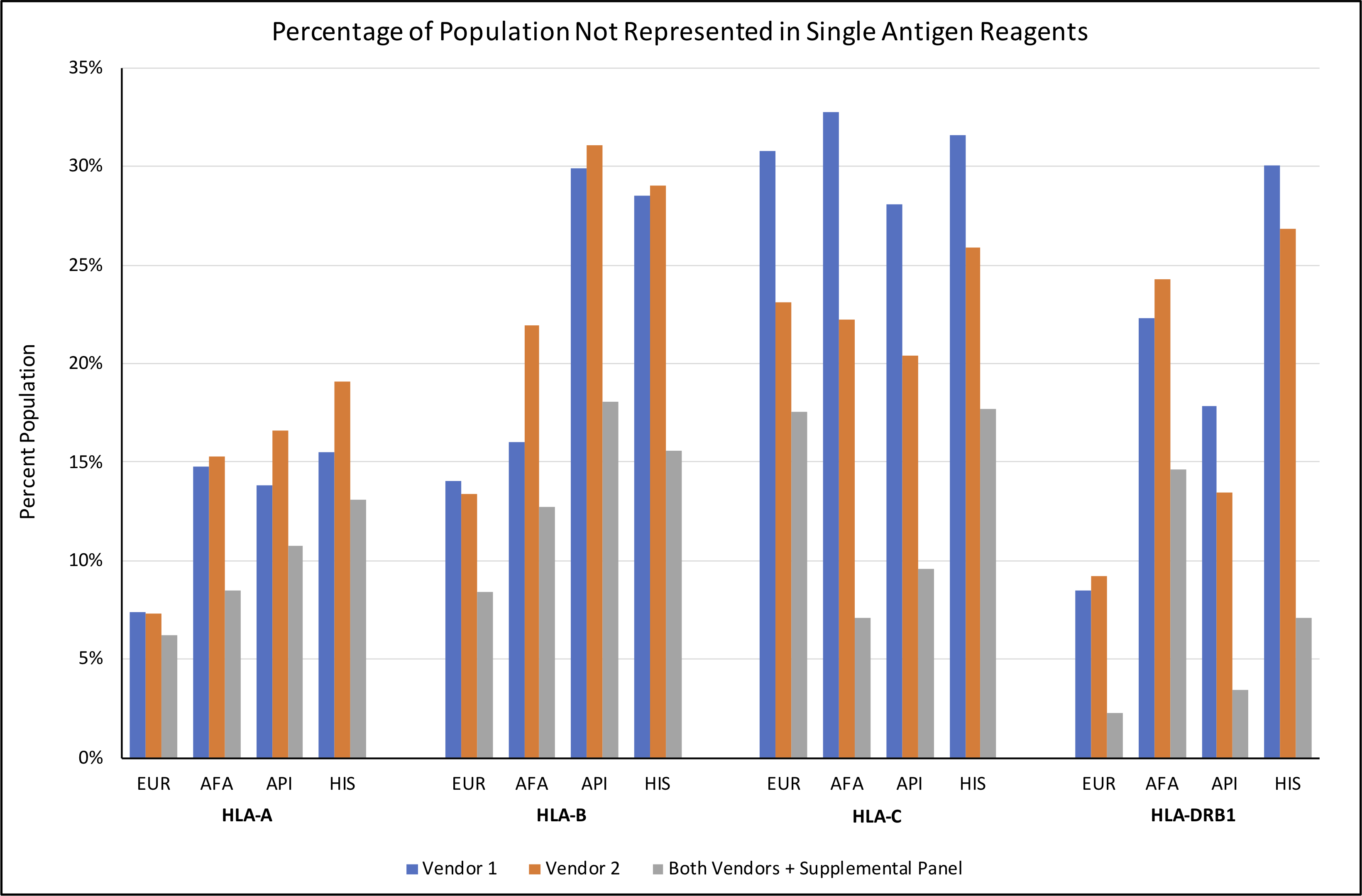Disparities in HLA Representation by Single Antigen Reagents in Different Ethnic Populations
1Keck School of Medicine of USC, Los Angeles, CA, 2Children's Hospital Los Angeles, Los Angeles, CA
Meeting: 2021 American Transplant Congress
Abstract number: 580
Keywords: Epitopes, Histocompatibility, HLA antibodies, HLA antigens
Topic: Basic Science » Histocompatibility and Immunogenetics
Session Information
Session Name: Histocompatibility and Immunogenetics
Session Type: Poster Abstract
Session Date & Time: None. Available on demand.
Location: Virtual
*Purpose: It is not possible to test for antibodies against the antigens encoded by every HLA allele due to cost and throughput constraints. When alleles are not represented in the single antigen reagents, donor specific antibodies may be missed because their antibody epitopes are not present. The extent of this problem is not evident without the benefit of allele-level typing, which is required to differentiate antigens in the panels and those expressed by donors. To investigate the limitations of single antigen reagents, HLA gene frequencies in four populations: European (EUR), African American (AFA), Asian/Pacific Islander (API), and Hispanic (HIS) were used to determine antigen coverage with single antigen reagents from two vendors.
*Methods: Allele frequencies (Common, Intermediate, and Well Documented HLA allele catalog, version 3.0) were used to determine the percentage of HLA-A, -B, -C, and -DRB1 alleles for EUR, AFA, API, and HIS populations that are not represented in single antigen reagents. Three commercial products were compared: Vendor 1, Vendor 2, and a combination of three reagents (both vendors and a supplemental panel).
*Results: For HLA-A, -B, -C, and -DRB1, the percentage of donor population unrepresented by the combined reagents ranged from 2.3% to 18.1% (Figure 1). The best representation was observed in the EUR population, where 6.3%, 8.4%, 17.5%, and 2.3% lacked representation at the HLA-A, -B, -C, and -DRB1 loci respectively. For the combined reagents, the percentage of each population not represented ranged from 7.1% to 14.6% for AFA, 3.4% to 18.1% for API, and 7.1% to 17.7% for the HIS population.
Figure 1. Percentage of EUR, AFA, API, and HIS populations that express HLA-A, -B, -C, and -DRB1 alleles not represented in single antigen reagents.
*Conclusions: All populations have HLA antigens that are not represented in single antigen reagents, which could result in failure to detect clinically significant antibodies. Single antigen reagents better represent the antigens of the EUR population compared to those in AFA, API, and HIS populations. This suggests that allele-level typing is important to identify situations where donor specific antibodies may not be detectable, including prevention and treatment of antibody mediated rejection.
To cite this abstract in AMA style:
Quon JC, Menteer J, Fotiadis N, Lestz RM, Baxter-Lowe LA. Disparities in HLA Representation by Single Antigen Reagents in Different Ethnic Populations [abstract]. Am J Transplant. 2021; 21 (suppl 3). https://atcmeetingabstracts.com/abstract/disparities-in-hla-representation-by-single-antigen-reagents-in-different-ethnic-populations/. Accessed December 14, 2025.« Back to 2021 American Transplant Congress

